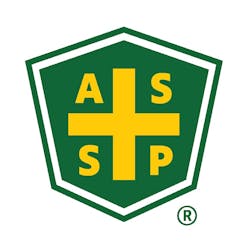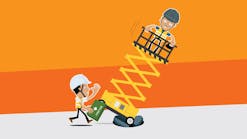A survey conducted last year by The Center for Construction Research and Training, supported by the American Society of Safety Professionals (ASSP) reveals six key findings regarding root causes of falls from height, according to ASSP.
Six root causes of falls from height
According to the responses to the Fall Experience Survey:
- Respondents believe a lack of planning is a key underlying cause of falls. Insufficient or ineffective planning was the most selected primary cause for falls (27.4 percent).
- Lack of planning is associated with a lower likelihood of using fall protection. The odds of using fall protection were 71 percent lower for individuals whose employer failed to plan.
- Nearly half of respondents (48.8 percent) said no fall protection was being used at the time of a fall.
- Employee beliefs about their company’s fall protection policy are strongly associated with their use of fall protection. Respondents who thought fall protection was required were eight times more likely to use it.
- Rescue training may help reduce fall-related deaths. The odds of a fall being fatal were 76 percent lower for workers who had self-rescue training.
- Workers employed by subcontractors face a higher risk of fatal falls. Those who work for a subcontractor were 2.7 times more likely to die from a fall compared to those who work for a general contractor.
“It’s important to remember that all falls are preventable, and that drives us to collect better information that can foster operational solutions,” said Jessica Bunting, director of CPWR’s Research to Practice. “Our new data is directly from people who are knowledgeable about workplace environments where falls are common.”
Working at height is inherently hazardous, exposing workers to significant risks, according to ASSP. The lack of use of personal protective equipment—and its misuse at times—greatly increases those risks, it says.
The ANSI/ASSP Z359 Fall Protection and Fall Restraint Committee will use the key findings from the Fall Experience Survey—which explored the root causes of falls from height—to enhance voluntary national consensus standards that guide safety at construction sites and many other workplaces.
“While data has been available on the types and rates of fatal and non-fatal falls, we need more information on the causes of those falls,” said Thomas Kramer, chair of the Z359 committee, in a prepared statement. “These new insights expand our knowledge so we can strengthen standards and ultimately prevent injuries and save lives.”
ASSP is secretariat of the Z359 committee that develops voluntary national consensus standards to address fall protection equipment and systems for climbing, work positioning, fall arrest, rescue, evacuation and other fall hazards. The standards also focus on worker training and steps organizations can take to identify and abate hazards to help their employees avoid injuries and fatalities when working at height. The standards are a key component of an employer’s managed fall protection program.
Source: ASSP





